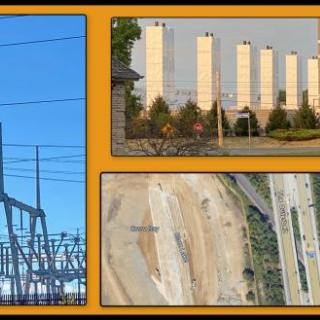Advertisement
Columbus, Ohio, is the rare large U.S. city (14th most populous, second largest city in the Midwest, and third most populous state capital) that requires its state’s name for recognition. This is one sign of many that derive from the city’s identity crisis (as I have named it), its weakness as an urban place, and the failure of its major institutions and media. (“Columbus’ identity crisis and its media,” Columbus Underground, July 23, 2021.)
Named for Christopher Columbus, Columbus has no professional histories and very few reliable, documented studies across the disciplines. [See Kevin Cox, Boomtown Columbus: Ohio’s Sunbelt City and How Developers Got Their Way (Ohio State University Press, 2021); Ellen Manovich, “‘Time and Change Will Surely Show’: Contested Urban Development in Ohio State’s University District,” Journal of Social History, 51 (2018), 1069-1099. A quick confirmation comes from a glance at the references to the Wikipedia entry on Columbus, Ohio.] Amateur anecdotal writings compete with mythical histories published by vanity presses.
The Ohio State University History Department long disdained local and urban history. The power of Ohio State University athletics prevents the city from securing professional baseball, football, or basketball teams. The iconic Ohio State Buckeyes, their mascot Brutus, and theme song “Carmen, Ohio,” carry no association with the city.
Despite the efforts of amateur historians and journalists, Columbus was never Arch City and certainly not Cowtown (sometimes laughably confused with Crop Town). More prevalent is the booster slogan the “Columbus Way,” substantially the promotion of the Columbus Partnership(the antecedent to the Columbus Downtown Development Corporation), a self-appointed nonprofit development corporation.” (See Bob Eckhart, “The Anti-Democratic Nature of the Columbus Way,” Columbus Free Press, Mar. 19, 2019; Cox, Boomtown Columbus.)
Slogans and physical symbols with no relationship to Columbus past or present substitute inadequately for urbanism and urban identity, which are not the same thing. (See my “Columbus searches for its Downtown with historical, urbanist, and developers’ blinders.”) Both share the qualities of boosterism, lack of discernable association with the city itself past or present, private development from undemocratic foundations, and lack of accountability.
These attributes are best summed up by the Columbus Partnership, “a nonprofit organization of CEOs from Columbus’ leading businesses and institutions.” Purposely evading the critical distinction between private and public, the self-selected and self-perpetuating group obfuscates the contradictions of a “nonprofit organization” committed to fostering private development at all costs. (See “The Columbus Partnership,” Case, Harvard Business School, 2015. I thank Bob Eckhart for this source.)
Founded in 2002, in the 2010s the Partnership worked “to improve public education” by raising taxes, by which it meant support for charter not public schools. “We got our butts kicked,” stated CEO Alex Fischer; “should we continue to try to improve education in Columbus or go back to the stuff we know how to do?”
In 2014 the Partnership paid Harvard Business School to produce a “case” that promoted an undocumented, indeed fictional role and set of accomplishments. The “case” bears a close resemblance to the Partnership website. The latter declares that the Columbus Partnership’s purpose is to make Columbus and Central Ohio “the most prosperous region in the United States. Prosperity is defined as the process by which more people improve their economic and social well-being.” Yet, the website never actually defines prosperity or states any measures. Basic economics have no place in any of the Partnership’s statements. Nor does the public itself.
The Columbus Partnership’s endlessly repeated slogan is the Columbus Way. “The Columbus Partnership is committed to the Columbus Way. It’s the practice of community stewardship, anchored by a set of values and principles that power progress in our region.” The so-called “values” that “power progress” are ambition (“the drive to reach new heights and never sit still”); inclusivity (“the recognition that leaders and change agents spring from everywhere”); collaboration (“harnessing the power of hearts and minds that are united by a shared vision”); common good (“a commitment to service that elevates all”); and fellowship (“Our unique type of togetherness that powers progress”). Behind, or ahead of, or underneath these “values” are “principles”: accountability, respect, integrity, and trust, undefined and without standards.
Nothing is specifically defined. There are no plans, programs, timelines, or budgets. Nothing is specific to Columbus, Ohio. There is only a poorly articulated marketing plan that calls itself the Columbus Way dictated by a self-appointed, unaccountable group of business leaders.
The only accomplishment listed on its website is the Smart Columbus self-driving shuttle vehicles initiative. Smart Columbus is City-initiated and managed, not The Columbus Partnership’s, despite their claim. Everything else is vague and lacking in concrete Columbus connection or specific relevance. “Branding,” as they inappropriately call it, fails. That is the Columbus Way.
The Columbus Partnership and its tagline Columbus Way consciously conflate themselves with the Columbus Downtown Development Corporation, a “nonprofit public development corporation,” a contradiction in terms. Currently headed by former Mayor Michael Coleman, this self-appointed, unaccountable civic and business “leaders” group’s “charge” states, “If there’s one word for what we at the Columbus Downtown Development Corporation (CDDC) do, it’s this: revitalization. In cooperation with our sister organization, Capitol South, we’ve produced projects as diverse as Columbus Commons to the Lazarus Building to the Scioto Mile. We’re catalysts for change. And we’re on mission to continue invigorating our Downtown by literally changing the landscape.” What they are “revitalizing,” according to what standards or measures, and what they mean by “landscape” are never stated. It does not seem to concern them. Yet these are no small matters for a “city” striving to be a city.
Four projects, none of which is solely the result of CDDC or Columbus Partnership actions, accompany this rhetoric: “It’s been said that there’s nothing wrong with change— as long as it’s in the right direction. And for Columbus, the right direction is where Downtown is headed right now.” Where “Downtown is headed” rests on four projects, two of them small, the other two still works in progress: a nine-acre park called Columbus Commons, the renovated Lazarus Building department store, Scioto Mile parks in progress (with an inappropriate 30+-story building proposed, and The Peninsula mixed-use development. Physical symbols to embody slogans—a park, water playground, refurbished building, mixed-use private developments—do not constitute “revitalization” or “change the landscape.”
Proclamations of “revitalization” may be debatable. What is not a matter for disagreement is the stanza of rhetorical platitudes: “Downtown Columbus is fast becoming one of the most attractive center cities in the country. Thanks to the leadership, facilitation and advocacy of Columbus Downtown Development Corporation (CDDC) and Capitol South Community Urban Redevelopment Corporation (Capitol South), many new city-changing projects have been completed, with more coming online every day.”
“Most attractive center cities?” “Many new city-changing projects?” This set of claims is unsupported by the naked eye, the standards of either historical or contemporary urbanism, or comparison with other urban places. (See my “Columbus searches for its downtown.”) This is not an identity for an urban Columbus, Ohio, nor a recognizable Columbus Way.
I hereby name the genuine Columbus Way the DIYC, the Do It Yourself City. If you see a violation, you must report it yourself and hope that the City or the Police Department responds. If you want to pursue an issue with City Government or City Council, you must navigate the maze of a website in the uncertain hope of finding a route to pursue. To follow City Council, you must stumble across the all-but-hidden sign-up spot on the City website. If you’re a landlord, a developer, a corporation, or a larger institution, the doors open much more widely to success in Do It Yourself City.
--------------------------------------------------
Harvey J. Graff is Professor Emeritus of English and History and Ohio Eminent Scholar at The Ohio State University. He is the author of many books on social history including The Literacy Mythand The Dallas Myth. His specialties include the history and present condition of literacy and education including higher education, children and families, cities, interdisciplinarity, and contemporary politics, culture, and society.



